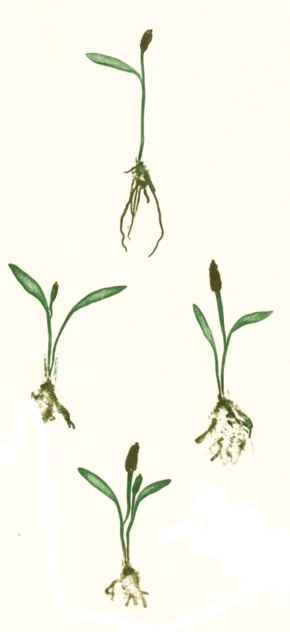Class Psilotopsida Rank Species | Division Pteridophyta Order Ophioglossales | |
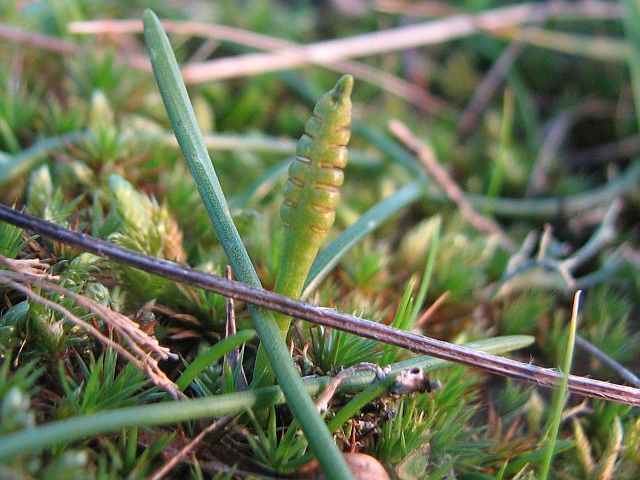 | ||
Similar Ophioglossum, Ophioglossum azoricum, Ophioglossum reticulatum, Ophioglossum polyphyllum, Anogramma leptophylla | ||
Ophioglossum lusitanicum, the least adder's-tongue, is a small fern of the family Ophioglossaceae. It is categorised as Vulnerable by the IUCN (2001).
Contents
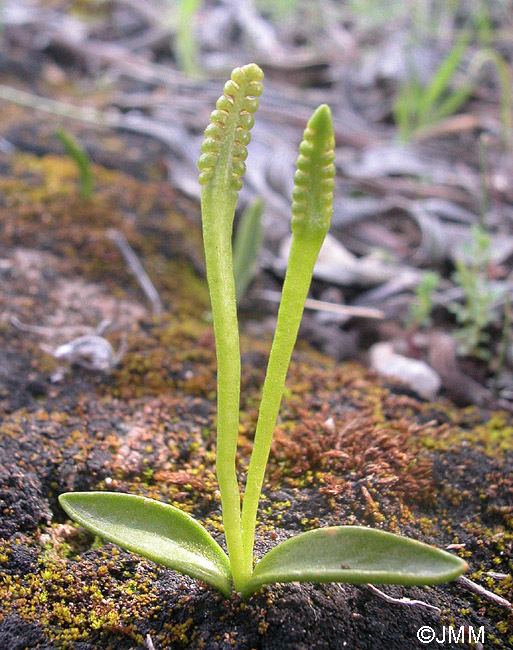
Description
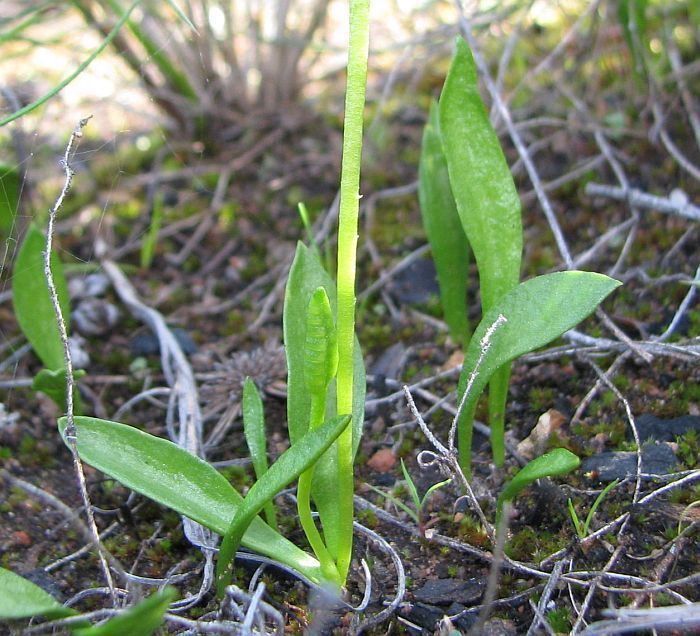
Ophioglossum lusitanicum is a small winter annual fern, and consists of a simple sterile blade attached to a spike-like fertile blade with between three and eight sunken sporangia on either side. The whole plant rarely exceeds a height of 2 cm.
This species has a chromosome number of 2n = 250–260.
Distribution
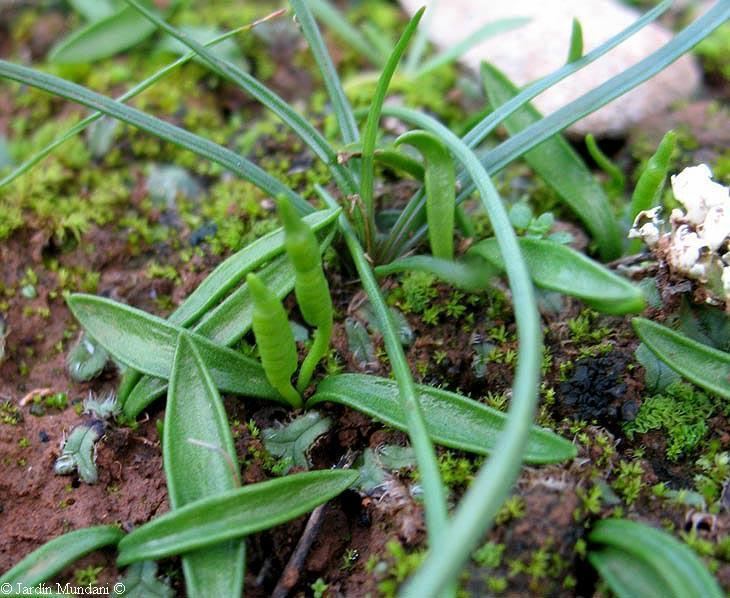
Ophioglossum lusitanicum is native to: the western seaboard of Europe (Great Britain, Spain and Portugal); the Atlantic Islands (Cape Verde and the Canary Islands); the Middle East (Israel and Iran);) South America (Peru and Argentina); and Australasia (Australia and New Zealand).

The distribution in Britain is restricted to one small area of coastal heath on St Agnes, Isles of Scilly where it was discovered by John Raven in 1950. It grows in short turf on Wingletang Down where some of the colonies are suffering from an increase of competitive grasses, gorse (Ulex europaeus) and bramble (Rubus fruticosus). Ophioglossum lusitanicum is listed on Schedule 8 of the Wildlife and Countryside Act 1981, and is within a Site of Special Scientific Interest (SSSI).
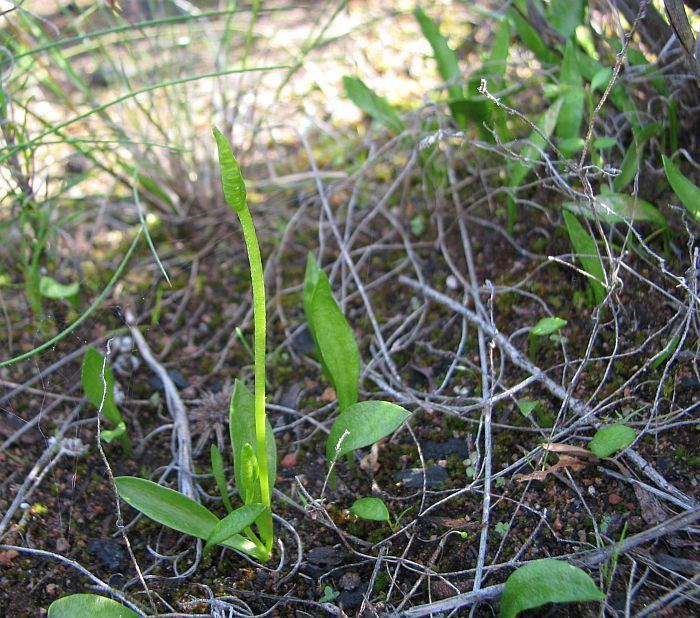
In Australasia and South America, this species is represented by a subspecies, Ophioglossum lusitanicum subsp. coriaceum (A. Cunn.) R.T. Clausen
Ecology
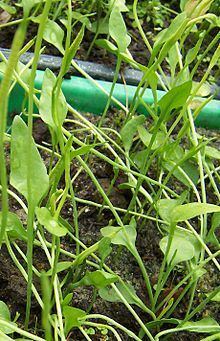
As this species is a winter annual, it requires a warm winter environment. In its British populations, it favours thin, unshaded, peaty soils in south-facing localities.
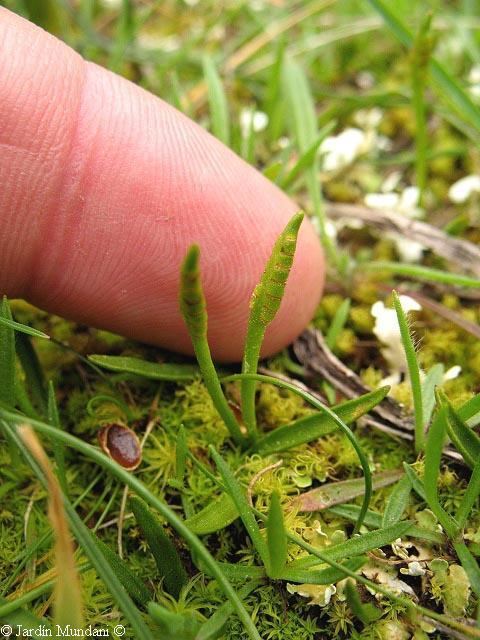
Ophioglossum lusitanicum subsp. coriaceum has a much broader ecological range in southern Australia, where habitats include damp open sites; from coast meadows to alpine grassland.. It is found in New South Wales, Tasmania, Queensland, and other states.
